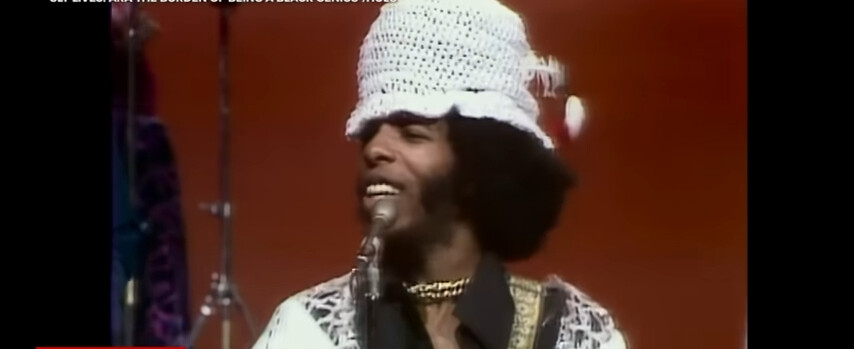Reading an obituary of Sylvester Stewart, better known as Sly Stone, strikes as surreal in 2025.
Didn’t he overdose in 1975? No, he just disappeared from popular culture around that time and we encountered him only rarely, and then usually not in top form, in the last half century.
But from 1967 into 1974, Sly Stone enjoyed 10 top-40 hits, including three #1s: “Everyday People,” “Thank You (Falettinme Be Mice Elf Agin),” and “Family Affair.”
At their height, Sly and the Family Stone headlined at such venues as Madison Square Garden, the Fabulous Forum, and the Spectrum. But in the darkest part of the second day at Woodstock, Sly and the Family Stone shone brightest. Sandwiched between Janis Joplin and The Who, the band convinced the crowd that waiting up until 3:30 in the morning made for a wise choice. The performance, particularly “Dance to the Music,” worked better than any stimulant to keep the audience wide awake. While a considerable portion of the crowd probably listened while on drugs, Sly and the Family Stone sounded so tight that it seems difficult to believe that they played under the influence — even if Sly’s history made it equally difficult to believe that they played sober.
By the next year, Sly Stone had missed about a third of the band’s scheduled concerts and showed up late to many, when he showed up at all. His studio output faltered, Sly and the Family Stone members walked, and, by the 1980s, the inevitable drug arrest followed.
“Duff, that mother—er is smoking crack in our bathroom again!” the girlfriend of the famous bassist informed him years prior to Guns N’ Roses hitting it big.
In a dingy part of Hollywood, a struggling Sly Stone lived in the apartment upstairs from the struggling musician. He shared home cassette recordings of new songs with McKagan. He mostly used drugs.
“I watched the illusions I had about one of my idols evaporate before my eyes,” Duff McKagan recalled in his autobiography. “Was the great Sly Stone living the good life, jamming in a home studio tucked away somewhere in his sprawling mansion? Nope, he was sneaking past my girlfriend to smoke crack in my bathroom.”
Rather than a cautionary tale, numerous members of Guns N’ Roses imitated, consciously or not, the concert tardiness and chemical indulgence of the man with whom they shared drugs in 1985.
Sightings thereafter, which included videos of Sly apparently living in a camper in Los Angeles, only added to his enigmatic, Howard Hughes-like reputation. He came off as friendly and quite likable, but ravaged by years of drug abuse. The demand for his music far exceeded the nonexistent supply.
More so than Jimi Hendrix, Keith Moon, or Elvis Presley, Sly Stone comes to mind as a case study in how chemicals kill talent. Remarkably, he lived past the life expectancy of the average male by reaching 82. But his career died long before he did.
For a few years in the late 1960s and early 1970s, Sly Stone was Sly Stone — exploding with energy, talent, and words that meant so much to so many. Like all explosions, it did not last long and left destruction in its wake.
He is survived by his three children and “Everyday People,” which survives us all.
READ MORE from Daniel J. Flynn:
Assassination Attempt on Colombian Politician Looks Familiar
Conservatives Understand ‘Big’ Does Not Describe Any ‘Beautiful’ Legislation
Loving ‘Doctor Who’ Means Cheering as the Daleks Exterminate This Woke Incarnation





















